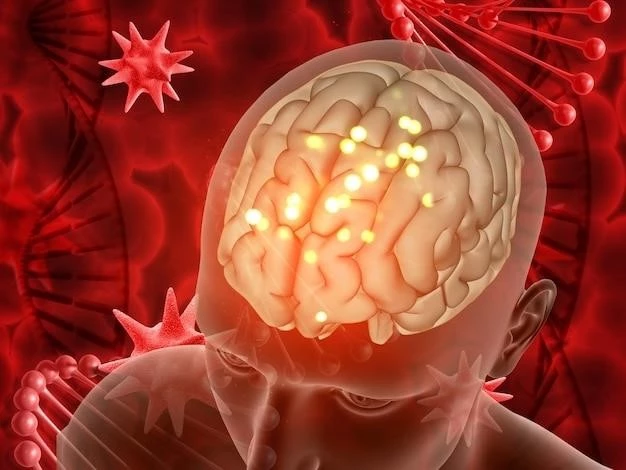Managing the Complexity of Hydrocephalus, Endocardial Fibroelastosis, and Cataracts ー Brain Disorders
Understanding these brain disorders is crucial for effective management. Seek medical advice promptly if you suspect any symptoms. Knowledge empowers you to make informed decisions about treatments and lifestyle adjustments.
Understanding Hydrocephalus, Endocardial Fibroelastosis, and Cataracts
Hydrocephalus is a condition where excess cerebrospinal fluid accumulates in the brain, causing pressure. Endocardial fibroelastosis affects the heart muscle, leading to thickening. Cataracts result in clouding of the eye’s lens. Understanding the complexities of these disorders can help individuals and caregivers navigate treatment options and make informed decisions. Educate yourself on the causes, symptoms, and potential complications associated with each condition. Consulting with healthcare professionals and seeking support from relevant organizations can provide valuable insights into managing these brain disorders effectively.
Recognizing Symptoms
Recognizing the symptoms of hydrocephalus, endocardial fibroelastosis, and cataracts is crucial for early detection and management. Common symptoms of hydrocephalus include headaches, blurred vision, and cognitive problems. Endocardial fibroelastosis may present as breathing difficulties, fatigue, and poor weight gain in infants. Symptoms of cataracts include cloudy or blurred vision and sensitivity to light. It is essential to be vigilant and seek medical attention if you or a loved one experience any of these signs. Prompt diagnosis and treatment can significantly improve outcomes and quality of life.
Diagnosis Process
Diagnosing hydrocephalus, endocardial fibroelastosis, and cataracts involves various medical assessments. Imaging tests like MRI or CT scans are often used to diagnose hydrocephalus by assessing brain swelling. Endocardial fibroelastosis may be diagnosed through echocardiograms to evaluate heart function. Cataracts can be diagnosed during a comprehensive eye exam. Doctors will analyze symptoms, perform physical examinations, and may recommend additional tests for a definitive diagnosis. It is essential to undergo timely diagnostic evaluations to initiate appropriate treatment plans and prevent potential complications.
Treatment Options
Treatment options for hydrocephalus may include shunt placement to divert excess fluid, endoscopic third ventriculostomy, or other surgical interventions. Endocardial fibroelastosis treatment focuses on managing heart function with medications, surgery, or heart transplantation in severe cases. Cataracts can often be removed surgically to restore vision. Consult with healthcare providers to discuss the most suitable treatment plan based on individual circumstances and disease progression. Adherence to treatment regimens and regular follow-ups are essential for optimal outcomes in managing these brain disorders.
Managing Hydrocephalus
Managing hydrocephalus requires ongoing care and monitoring. Follow the recommended treatment plan prescribed by healthcare professionals diligently. Regularly attend follow-up appointments to assess shunt function, fluid levels, and overall well-being. Be vigilant of symptoms such as headaches, nausea, or changes in mental status, and promptly report any concerns to your medical team. Engage in activities that promote brain health and physical well-being. Educate yourself and loved ones about hydrocephalus management to ensure a supportive environment. Collaborate closely with medical providers to optimize management strategies and enhance quality of life.
Coping with Endocardial Fibroelastosis
Coping with endocardial fibroelastosis requires a multifaceted approach. Comply with prescribed medications and follow lifestyle recommendations to support heart health. Maintain a balanced diet, engage in regular physical activity within recommended limits, and manage stress effectively. Seek emotional support from family, friends, or support groups to navigate the challenges of living with this condition. Educate yourself about endocardial fibroelastosis and its management to empower yourself and actively participate in your care. Open communication with healthcare providers is key to addressing concerns and adapting treatment plans as needed for improved well-being.

Dealing with Cataracts
Dealing with cataracts involves understanding available treatment options and taking proactive steps. Consult with an ophthalmologist to determine the best approach for cataract removal surgery. Follow pre-operative and post-operative guidelines to ensure a successful recovery. Protect your eyes from UV radiation and maintain overall eye health through regular check-ups. Adjusting to vision changes post-surgery may require patience and adaptation. Use proper lighting and magnification tools if needed for daily activities. Stay informed about cataract management strategies to preserve visual clarity and enhance quality of life.
Potential Complications
Being aware of potential complications associated with hydrocephalus, endocardial fibroelastosis, and cataracts is crucial. Complications of hydrocephalus may include shunt malfunction, infections, or neurological issues. Endocardial fibroelastosis can lead to heart failure or arrhythmias if left untreated. Cataract complications may involve infection, increased eye pressure, or secondary vision impairments. Regular monitoring and prompt intervention can help prevent or manage these complications effectively. Stay informed, communicate openly with healthcare providers, and adhere to recommended protocols to minimize risks and maintain optimal health outcomes.
Psychological Impact
The psychological impact of hydrocephalus, endocardial fibroelastosis, and cataracts can be significant for individuals and their support networks. Coping with the emotional challenges that come with these conditions is essential. Seek counseling or therapy to address feelings of anxiety, depression, or frustration. Engage in activities that promote mental well-being, such as mindfulness practices, hobbies, or social interactions. Communicate openly with loved ones about your emotions and needs during this journey. Joining support groups or connecting with others facing similar challenges can provide a sense of community and understanding. Prioritize mental health alongside physical care to achieve overall well-being.
Lifestyle Modifications
Implementing lifestyle modifications can positively impact the management of hydrocephalus, endocardial fibroelastosis, and cataracts. Maintain a balanced diet rich in nutrients to support overall health and well-being. Stay hydrated and follow recommended fluid intake guidelines for hydrocephalus management. Incorporate regular exercise routines tailored to your physical capabilities to enhance cardiovascular health. Avoid smoking and limit alcohol consumption to reduce the risk of complications. Protect your eyes from further damage by wearing sunglasses and seeking prompt treatment for cataracts. Prioritize adequate rest and stress management techniques to promote resilience and overall quality of life.
Support Systems
Building robust support systems is crucial for individuals managing hydrocephalus, endocardial fibroelastosis, and cataracts. Seek emotional support from family, friends, or spiritual communities to cope with the challenges of these conditions. Joining patient advocacy groups or online forums can provide valuable insights and a sense of belonging. Engage with healthcare providers who specialize in these disorders and connect with social workers or mental health professionals for additional support. Communicate openly with your support network about your needs and concerns, fostering a collaborative environment that promotes overall well-being and empowerment in navigating the complexities of these brain disorders.
Research and Innovations
Staying informed about the latest research and innovations in hydrocephalus, endocardial fibroelastosis, and cataracts can offer hope and potential breakthroughs in treatment. Follow scientific advancements in medical journals, clinical trials, and academic institutions to stay updated on emerging therapies and diagnostic tools. Engage with healthcare providers to discuss any new treatment options or research studies that may be applicable to your condition. Participating in research initiatives can contribute to the collective understanding of these brain disorders and pave the way for improved care practices. Embrace the spirit of innovation and explore opportunities to be a part of advancements in the field for enhanced treatment outcomes.
Care Coordination
Effective care coordination plays a vital role in managing hydrocephalus, endocardial fibroelastosis, and cataracts. Establish clear communication among healthcare providers involved in your treatment to ensure a comprehensive approach. Maintain organized medical records, including test results and treatment plans, for seamless transitions between specialists. Advocate for yourself or your loved one by asking questions, seeking clarification on treatment decisions, and expressing any concerns regarding care. Collaborate with a designated care coordinator or case manager to streamline appointments, referrals, and therapies. By fostering strong care coordination, you can enhance the quality of care received and optimize the management of these brain disorders.
Long-Term Outlook
Considering the long-term outlook for hydrocephalus, endocardial fibroelastosis, and cataracts involves proactive management and regular follow-ups. Discuss with healthcare providers the expected course of each condition and potential lifestyle adjustments. Monitor changes in symptoms, treatment efficacy, and overall well-being over time to adapt care plans accordingly. Embrace a positive mindset and focus on achievable goals to navigate the complexities of these brain disorders successfully. Engage in open communication with your medical team, share your concerns, and actively participate in decision-making for long-term health outcomes. By prioritizing consistent care and addressing challenges promptly, you can work towards a stable and promising long-term outlook.
Conclusion
In conclusion, managing the complexity of hydrocephalus, endocardial fibroelastosis, and cataracts requires a multidisciplinary approach and steadfast commitment to care. Understanding the symptoms, diagnosis process, and treatment options is pivotal in coping with these brain disorders. Embracing lifestyle modifications, seeking support systems, and staying informed about research advancements can positively impact long-term outcomes. By prioritizing care coordination, maintaining a positive outlook, and actively engaging in treatment decisions, individuals can navigate the challenges posed by these conditions effectively. Remember, you are not alone on this journey ⎻ seek support, advocate for your needs, and empower yourself in the management of hydrocephalus, endocardial fibroelastosis, and cataracts.
